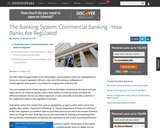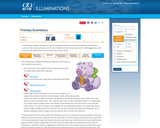
Article describes how commercial banks are regulated by the government
- Subject:
- Business and Information Technology
- Career and Technical Education
- Material Type:
- Reading
- Reference Material
- Author:
- Stephen D. Simpson
- Date Added:
- 05/31/2018

Article describes how commercial banks are regulated by the government

The financial crisis of 2007-8 has already revolutionized institutions, markets, and regulation. Wright's Money and Banking V 2.0 captures those revolutionary changes and packages them in a way that engages undergraduates enrolled in Money and Banking and Financial Institutions and Markets courses.
Minimal mathematics, accessible language, and a student-oriented tone ease readers into complex subjects like money, interest rates, banking, asymmetric information, financial crises and regulation, monetary policy, monetary theory, and other standard topics. Numerous short cases, called "Stop and Think" boxes, promote internalization over memorization. Exercise drills ensure basic skills competency where appropriate. Short, snappy sections that begin with a framing question enhance readability and encourage assignment completion.

In this math lesson, learners play the role of a consumer as they learn how to use different combinations of coins to make money amounts up to 25 cents. Learners earn money and save it in their piggy banks until they have the exact amount to purchase an item of their choice. This lesson guide includes questions for learners, assessment options, extensions, and reflection questions.

Personal Finance course FREE teacher resources and trial access to online course solution as well as a correlation to WI state standards.

Site provides lessons, tutorials, interactive games, and resources to teach and learn personal financial concepts such as credit, budgeting, purchasing, and personal goal setting